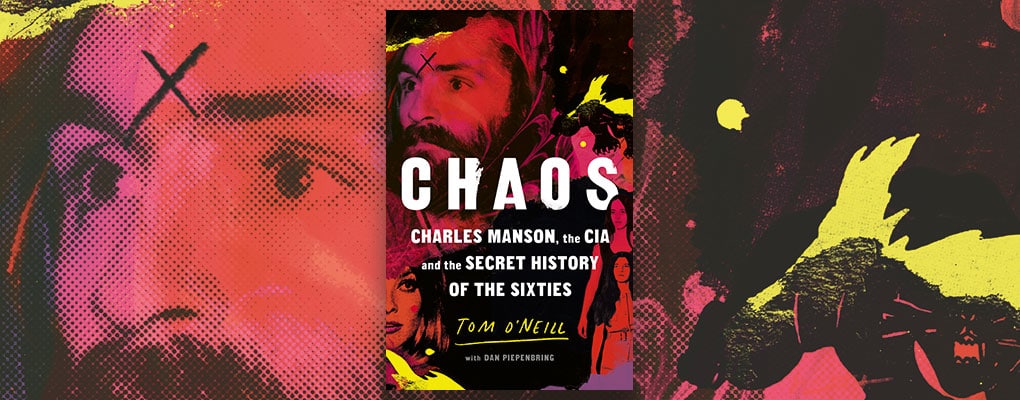Books
Chaos: the truth behind the Manson family murders
Fifty years ago, Charles Manson’s infamous Manson Family invaded 10050 Cielo Drive – a Beverly Hills mansion – and murdered five people, most notoriously the heavily pregnant movie star Sharon Tate. Amid a frantic media circus, they were tried and convicted. The prosecutor, Vincent Bugliosi, wrote a book on the murders, Helter Skelter, which became the bestselling true crime book of all time. For decades, it was taken as gospel: the one true account of the Manson murders.
But was it the full story?
Now, after twenty years of exhaustive research, journalist Tom O’Neill and co-author Dan Piepenbring have written Chaos: Charles Manson, the CIA and the Secret History of the Sixties, a book that blows Helter Skelter apart and stakes its claim as the ultimate Manson history.
Here are five of the most dramatic revelations found in Chaos:
1. The Melcher Connection
Bugliosi claimed that terrorising Terry Melcher, a record producer who’d turned down Charles Manson’s music, was the real aim of the murders, as Melcher had once lived at 10050 Cielo Drive. But O’Neill discovered that two key witnesses – and notes written in Bugliosi’s own hand – claim Melcher visited Manson three times after the murders, and was still friendly with the Family. The prosecution’s entire claimed motive was a fiction. But what were they trying to hide?
2. The Manson Mistake
Soon after the murders, the Los Angeles Sheriff’s Office launched a major raid on the Manson Family ranch – but Manson wasn’t charged with a crime. Bugliosi claims this was due to a paperwork error invalidating the warrant. O’Neill found that this wasn’t true. The raid was legal – and Manson was found with stolen credit cards on his person and stolen cars on his property. For some reason, the district attorney declined to press charges, and Manson wasn’t brought to justice for four months. Why was Bugliosi fabricating non-existent errors to cover for this? Did Manson have friends in high places?
3. The Bad Evidence
Bugliosi claimed that a friend of Sharon Tate had seen Manson visit the house on Cielo Drive while Tate was living there, proving that Manson knew where the house was – and knew that Melcher had moved out. But when O’Neill met this witness, he said he hadn’t been sure – but that he’d been coerced into claiming he’d seen Manson under threat of deportation. If the case was as simple as it seemed, why was the prosecution effectively fabricating evidence?
4. The Prosecutor’s Headline
When newspapers worldwide published a lurid first-hand account of the murders by the Family’s Susan Atkins, Bugliosi said he was shocked and had nothing to do with it. O’Neill learned that Bugliosi’s office had advance knowledge of the planned publication of the story but did nothing to stop it as required. This violation of the judge’s gag order aided the prosecution by setting the narrative early on. Bugliosi was deliberately sensationalising the trial to help further his own career. What else was never brought up because it didn’t fit his narrative?
5. The Phantom Deal
Bugliosi claimed to have cut a legal deal with Atkins, arranging to have her testify before a grand jury in exchange for a potentially reduced sentence. But the deal was fake: Bugliosi needed Atkins’s cooperation to indict Manson and the Family, so his office conspired with a judge to have her court-appointed attorney replaced with a former DA who pushed her to accept the prosecution’s ‘deal’ without getting it in writing. Bugliosi and his colleagues resorted to underhanded and outright illegal tactics to make sure he got the indictments he needed – and that the prosecution’s version of events would be the only version that anyone heard. Why was that necessary?
The Manson murders have captured the public’s imagination for decades, but only now are we learning that much of the story we’ve been told over the years was a lie. The truth is far more complex – and far more shocking. This case had tendrils that extended into places you’d never have thought possible.

